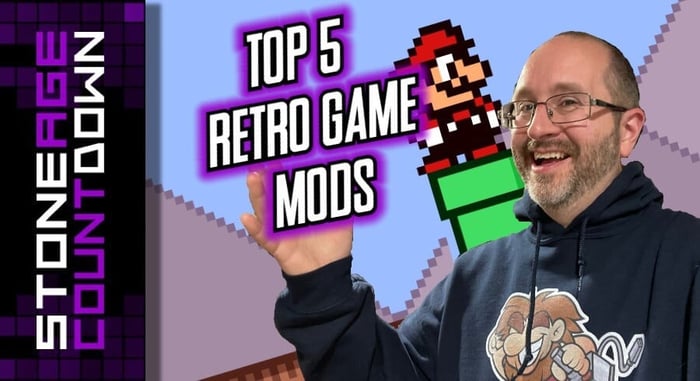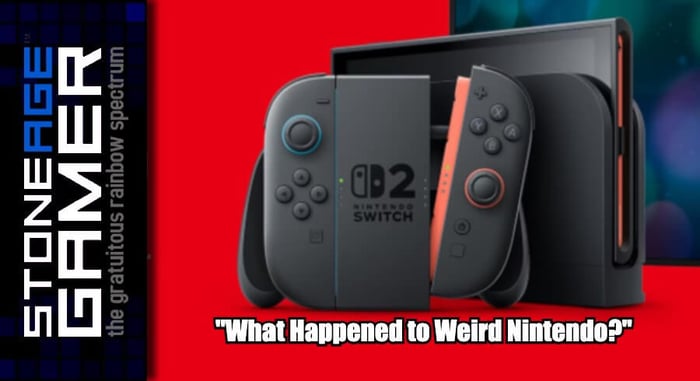
Stone Age Countdown: Top 5 Retro Game Conversions
Playing retro video games as their creators intended will always be an important thing to preserve, but modern technology can offer some changes that improve the overall experience while maintaining a degree of authenticity. From colorizing black & white classics to removing slowdown, these are my top 5 Retro Game Conversions.
Transcript of the video:
#5 Colorized Classics
Video games being in full color has never been much of a novelty. Even in the atari 2600 days, games were by default programmed in color. However, there were a number of handheld platforms for decades that stuck with monochromatic screens in favor of cutting costs. The Wonder Swan, Neo Geo Pocket, Virtual Boy, and of course, the mighty Game Boy itself, all had monochrome screens. This means a ton of absolute classics are stuck in black and white, or on the Virtual Boy’s case, red and white. Thankfully, there are a number of service techs out there bringing color to these classic worlds in wonderful ways.
This isn’t wholly limited to homebrew devs, as we’ve seen stuff like Link’s Awakening DX on Game Boy Color and Capcom’s almost released Mega Man Mania, but by and large the best of these efforts have been done by independent developers. The work these fine folks have put into making some of the coolest black & white games look like new is a constant source of amazement to me, and I’m always happy to see more of it.
#4 Remakes
Every system has its defining games. Sometimes they’re good, and other times, not so much. It’s in these cases that sometimes legendary names get a bad reputation. Would anyone know what the CD-i was without those awful Zelda games? How many people love touting that a terrible version of Pac-Man crashed the US game industry? (it didn’t). How did Pitfall go from groundbreaking to well, this? Fortunately for us all, there are hard-working individuals ot there righting the wrongs of the past. From Donkey Kong VCS to this actually playable version of Link: Faces of Evil, updated versions of some of gaming’s most famous missed opportunities are a fascinating way to see an alternate reality where things worked out the way they should have.
#3. Clearing those technical hurdles
Many classic games, especially on the Super NES and NES, suffered from slowdown. For a while, direct ports and basic emulation didn’t really do much to tackle this issue, but in the last few years some major strides have been made in terms of making some of our favorite classics more playable while maintaining authenticity. This has been accomplished to remarkable degrees by both official and unofficial channels. Take the recent TMNT Cowabunga Collection from Digital Eclipse. These games look and play better than ever with the option to remove not only slowdown, but screen flicker as well. Or how about Pilotwings 64 running at 60fps on Nintendo Switch Online? On the homebrew front, how about the amazing efforts to make Konami’s SNES classics run beautifully? Contra III: The Alien Wars with no slowdown? Yes please. And probably the most famous example, Gradius III’s bubble area running on an actual SNES running silky smooth? Amazing. And oh, HD Mode 7. How crazy is that stuff? I don’t know what they'll come up with next, but I can’t wait.
#2. Make it Widescreen
I don’t know why this one tickles me so much, but it absolutely does. One of the things I hate most in this world is when games offer a stretched perspective to make it “fit” a modern screen. Aspect ratio distortion drives me bananas. So when I see examples of retro games actually being remade to support true widescreen, I take notice. I absolutely love it. And again, this is being embraced by official and unofficial channels. Sega recently released real widescreen versions of all their classic Sonic games on home consoles. Square even added ultra widescreen support to Chrono Trigger (everywhere but home consoles for some reason, but whatever). Of course Nintendo themselves haven’t dabbled in this, but the fan community is out there doing what Nintendon’t with gorgeous widescreen versions of Super Mario World, Super Metroid, F-Zero, and more. Absolutely wonderful.
#1. Be Kind, Rewind
If there’s one singular trend in modern takes on retro games that makes me happy, it’s the rewind function. Save states have been around for ages, and they’re great. But rewind, well, that’s a whole other ball game. I think the first tie I played a game with this function was Prince of Persia Sands of Time, but that was a new game built around that mechanic. I loved it though because it allowed me to keep practicing specific moments until I got them right without needing the foresight to create a new save state. Now, you see rewind on just about every retro compilation out there and I couldn’t be happier. I did my time with absurdly difficult games when I was a kid. I don’t need to prove anything to anyone darn it, so when I play through Ninja Gaiden, or Mega Man 1, or Comix Zone, or TMNT, I abuse the ever loving crap out of that rewind button and I couldn’t care less.
But what makes it cooler than just negating difficulty, it allows me to see things in retro games I always missed out on. Alternate paths in games like Dracula X that I never took the time to take. Practicing strategies on a punch by punch basis in Punch Out. Stuff like that is so easy to do with rewind, and it adds a layer of discovery to these old games I’ve played a bajillion times that I just love to death. Rewind is king, and I want more of it.





